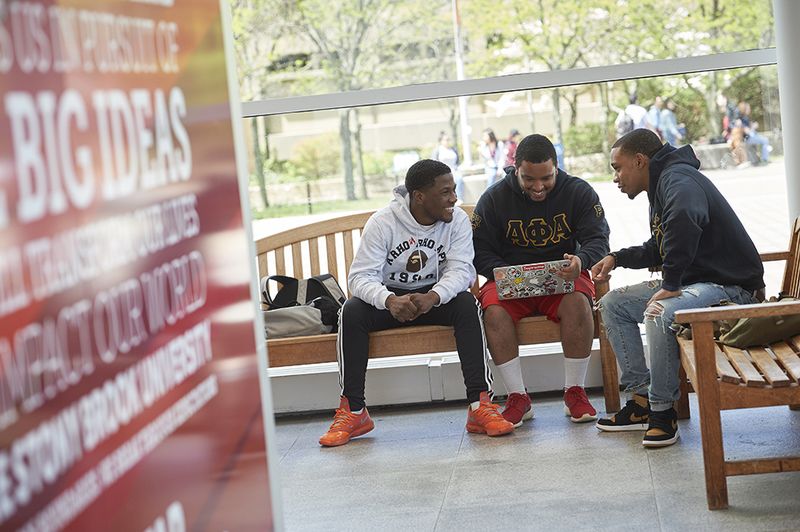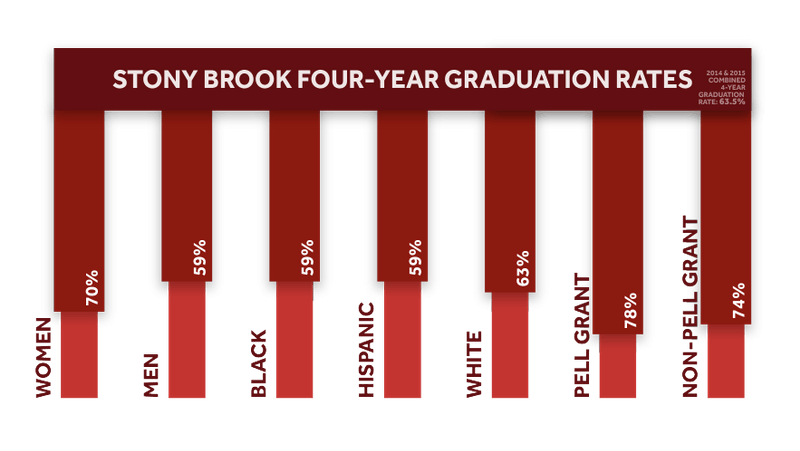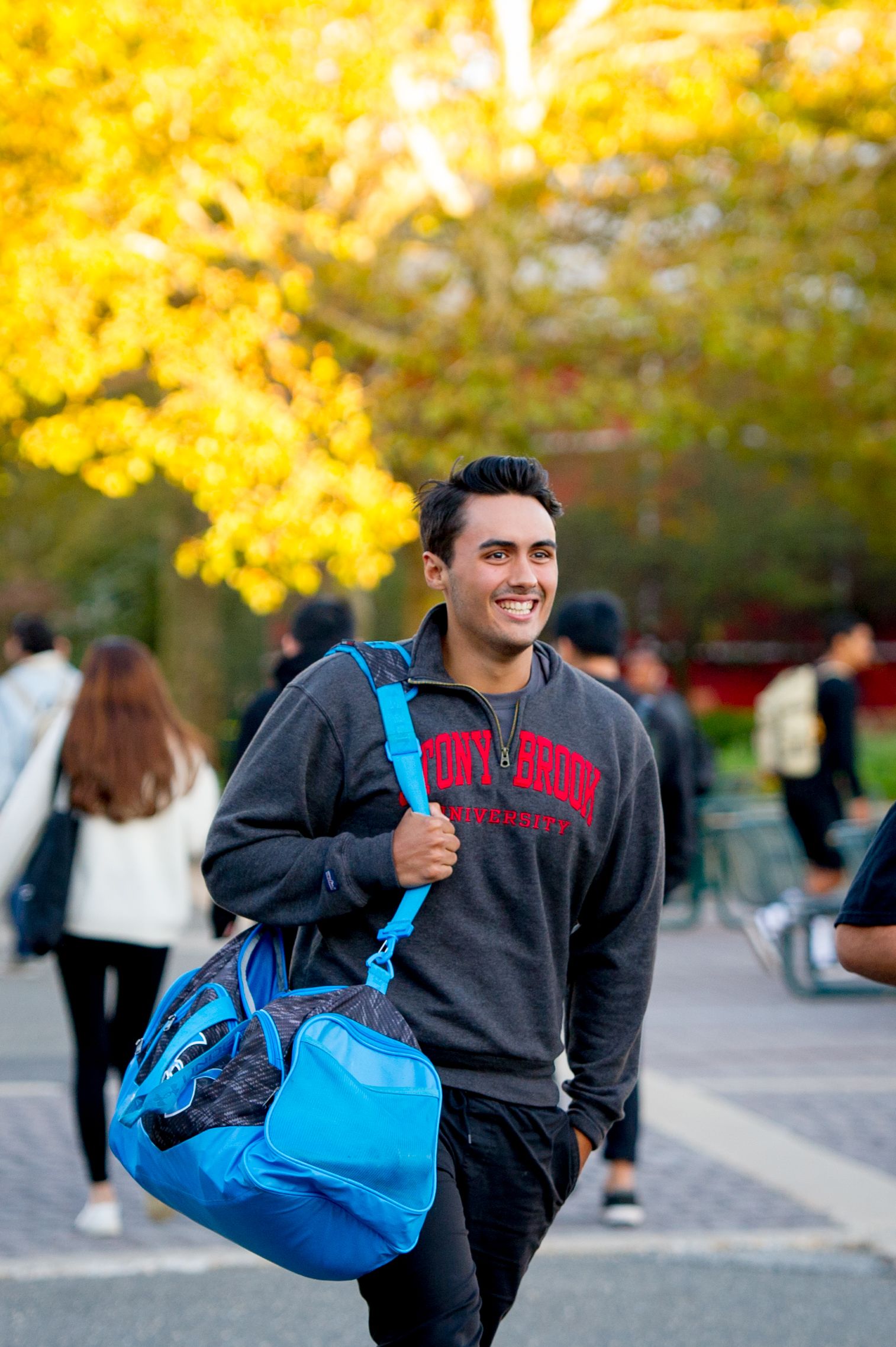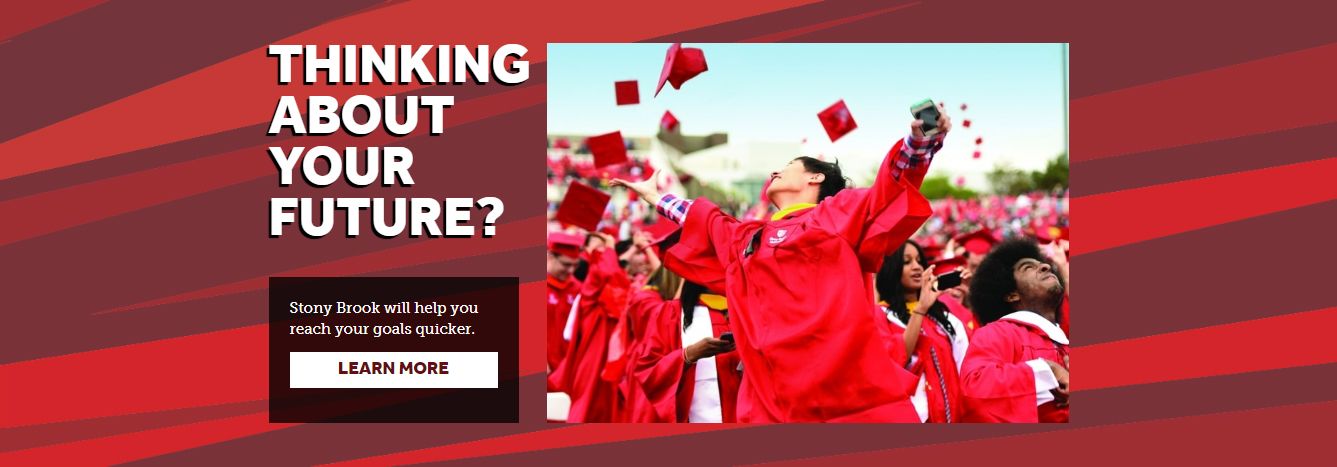A Multipronged Approach to Closing the Graduation Gap

Amid the staggering challenges of serving current and incoming students remotely, Rachelle Germana, Associate Provost for Academic Success at Stony Brook University in New York, noticed something curious: Students had started answering their phones again.
“Prior to the pandemic, we had almost stopped calling students, other than as a last effort when they weren’t responding to texts or emails,” explains Germana. She can only guess at the reasons for this abrupt change in Gen Z behavior, she says, adding that it’s probably related to missing the college experience.
But she believes that she and her colleagues picked up on this subtle shift because of Finish in 4, the University’s enormously successful retention and graduation initiative. The “high tech, high touch” program is equal parts sophisticated data analytics and simple human interaction, and the results have exceeded expectations. Between 2009 and 2015, Stony Brook increased its four-year graduation rate by 17 percentage points (47% to 64%). The University also has reduced some longstanding equity gaps.


The recent realization that students are answering their phones is a good — if simple — example of how Finish in 4 works. Because the University continually collects and analyzes data from its engagement efforts, Germana’s team noticed when responses to text messages started to decline and when the answer rates for phone calls rose. That’s the “high tech” element at work. The commitment to “high touch” dictated that they adjust their tactics.

“So a lot of what we’re doing now with the phone calls is checking in with [students]. [Masters of Social Work] interns have been assisting with this, calling and simply asking, ‘How are you doing?’ In this environment, we all want someone to ask us that. And that helps the students understand that the University really cares about them and wants them to succeed, and then the next part of the conversation can be about degree progress.”
Though powered by technology, Finish in 4 grew, in part, out of recognizing its limitations.
“In the previous decade,” Germana explains, “many assumed that tools that helped universities calculate risk and organize workflow would make them so efficient at identifying students who are vulnerable and reaching out to them that they wouldn’t need as many people to do the work.
“What we found was that that wasn’t true,” she continues. “It creates efficiencies, but it also opens up our understanding of students at risk, and when that happens, you need people to respond to those students and support them. You need a combination of technology that can help identify students who are vulnerable, organize workflows, coordinate care across different units, and you need more direct contact with students. It’s really people, process, technology. People come first.”
But data collection and analysis make it possible.
“You have to figure out who to engage, where it will actually make a difference,” says Richard Gatteau, Vice President for Student Affairs and Dean of Students. “It’s finding the students who are lost and connecting with them.”
An in-house analytics team — under the leadership of Braden Hosch, Associate Vice President for Institutional Research, Planning & Effectiveness (IRPE) — segments the data into various buckets: for example, students with GPAs between 2.0 and 2.5 and students who are behind in credits at particular thresholds. These buckets help the University’s academic success retention advisers see who falls into what they call the “murky middle” — students who weren’t necessarily poor academic performers but who could easily fail to graduate without guidance and support.
“If we bucket out the third-year students who have 90 credits, we can send a text message to them to make sure they understand that they can still graduate but will have to be strategic about what they take,” Germana says. “They’ll also get a tiny URL they can click on to make an appointment with one of the Finish in 4 advisers. That’s been really successful.”
But texts are just one tool. Prior to the campus closure due to the pandemic, much of the work was face-to-face, through events such as “pop-up” advising sessions across campus, where students could drop in for assistance with their academic, registration or financial concerns. These, too, proved very effective, Germana says.
Stony Brook’s IRPE office reports that the University has reduced the graduation equity gaps between women and men (70% vs. 59%); among white, black and Hispanic students (63%, 59% and 59%, respectively); and between Pell and non-Pell Grant recipients (78% vs. 74%). Almost a third of Stony Brook’s 17,000 undergraduates receive Pell Grants. The University also outpaces national graduation rates: The National Center for Education Statistics reports a 60% average six-year graduation rate; Stony Brook’s current six-year rate stands at just over 75%, and its four-year rate is 63.5%.

The IRPE estimates that by growing graduation rates so quickly over six years, 1,800 more students graduated on time. That saved those students $24 million in tuition fees and gave them $101 million in additional earning capacity because they entered the workforce more quickly, more prepared and with less student loan debt.

“Everything we do is data-informed or data-driven. We rely on evidence-based practice. We measure what we do. If it doesn’t work, we do something else. If it does work, we try to make it better.”

Even the pandemic has been an opportunity to learn and improve. For example, Germana says, pop-up events designed specifically for students who are veterans were never well attended, but vet-focused outreach online has been successful. And many students seem to like the new option for one-on-one advising in the evening, because it’s more convenient for their schedules.
“What that shows us again is that there’s not a one-size-fits-all solution,” Germana observes. “We could have been doing virtual sessions even when we were on campus; it just didn’t occur to us that it would be more useful for some students.”
People, process and technology are informing one another in a constant loop.
“For me, the most important thing has always been our core values,” Germana explains. “All of this derives from those values: being student-centered, data-informed and utilizing [evidence-based practices and predictive analytics]. And in Finish in 4, our approach can be both individualized and at scale. That is the foundation of how we organize our efforts. Even in the virtual environment, those values are still there. We may have some setbacks, but we believe we can still get students all the support they need to graduate.”



